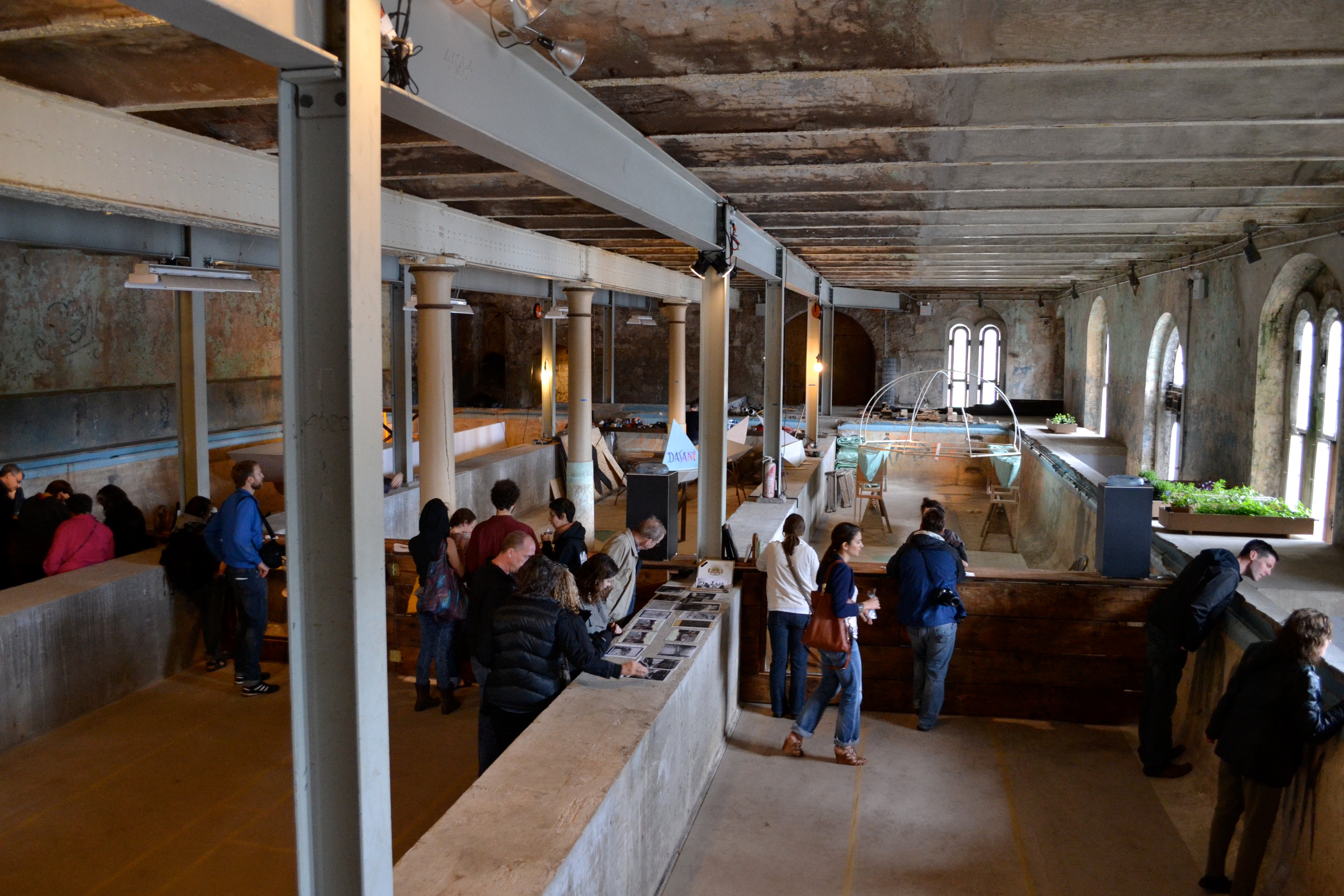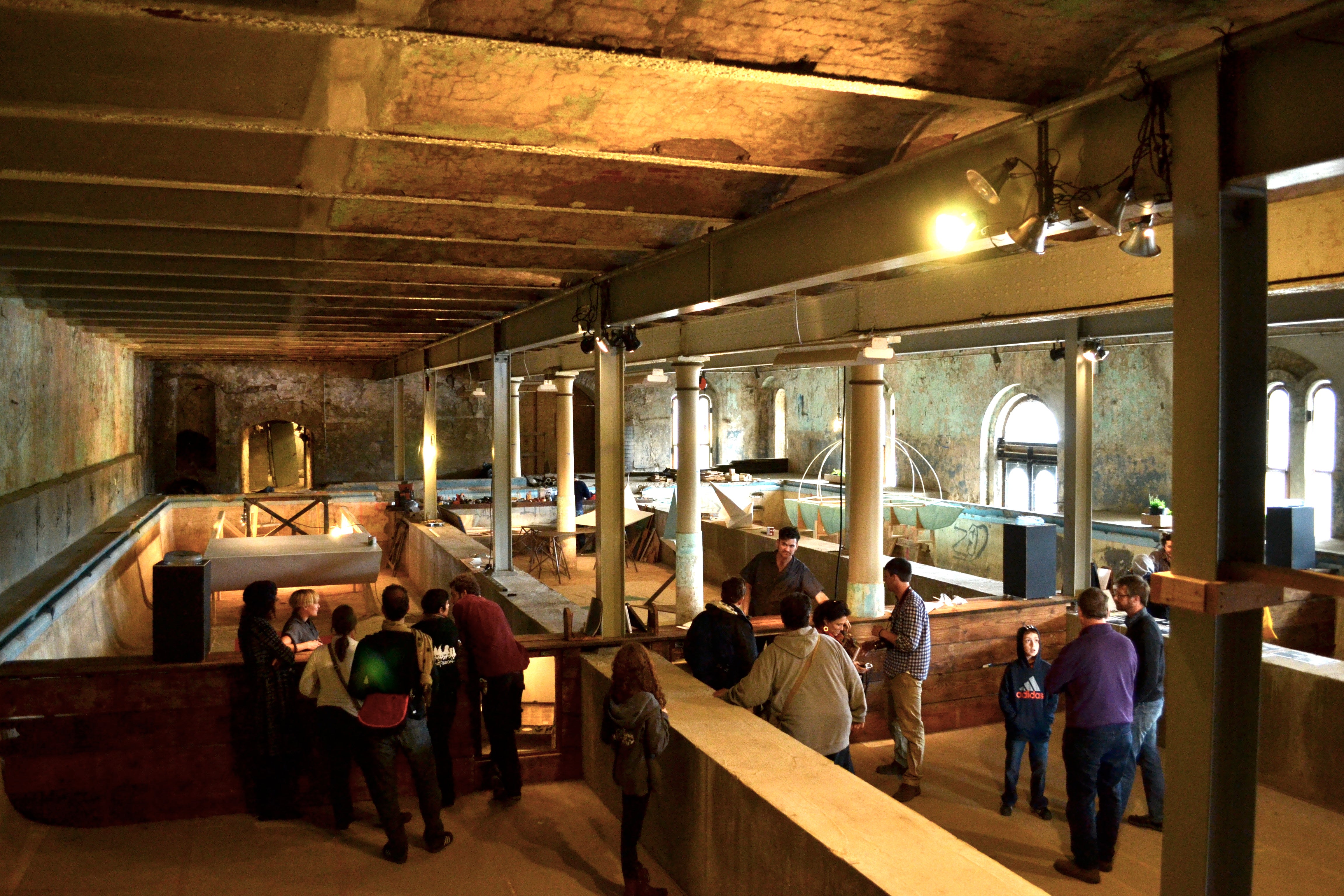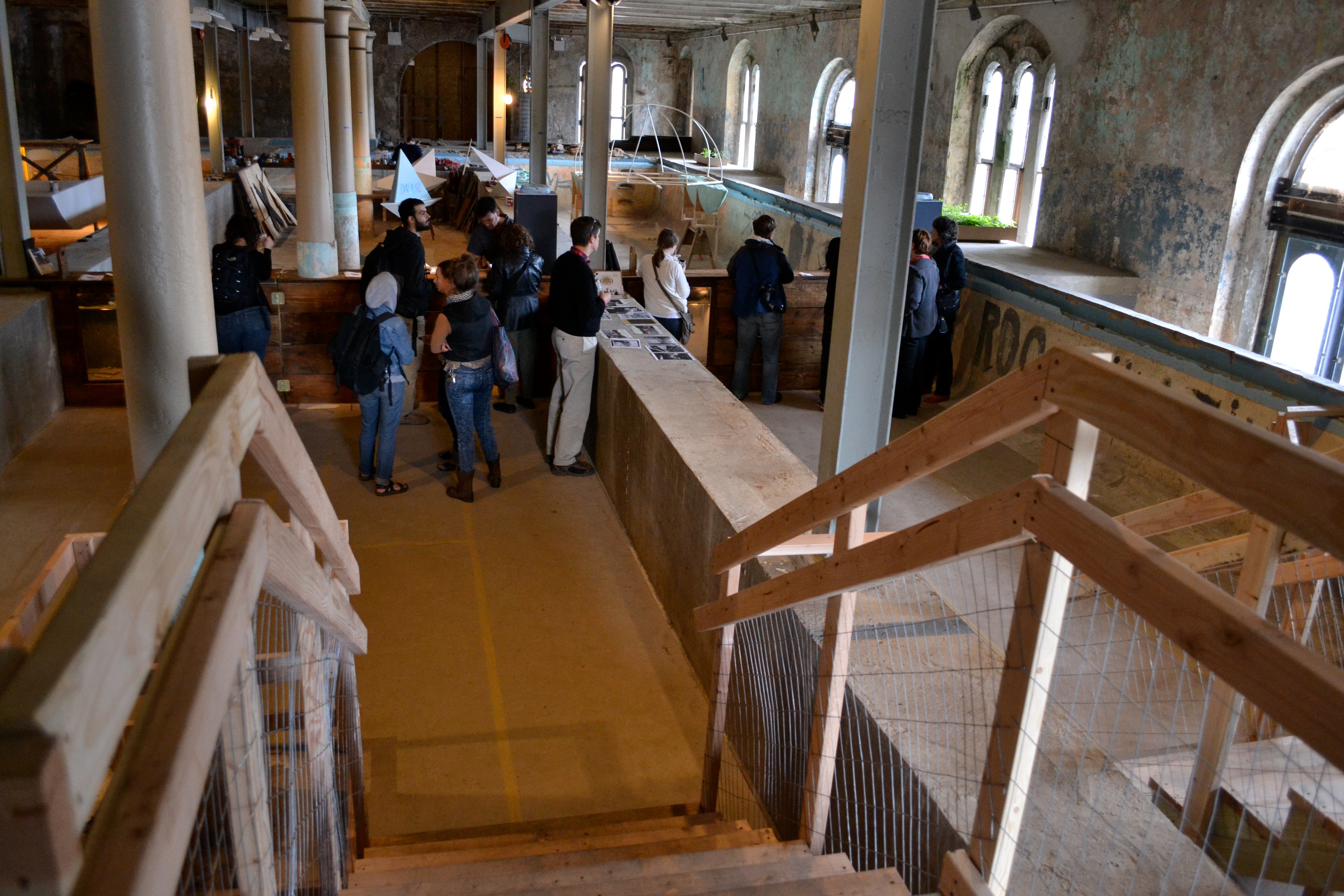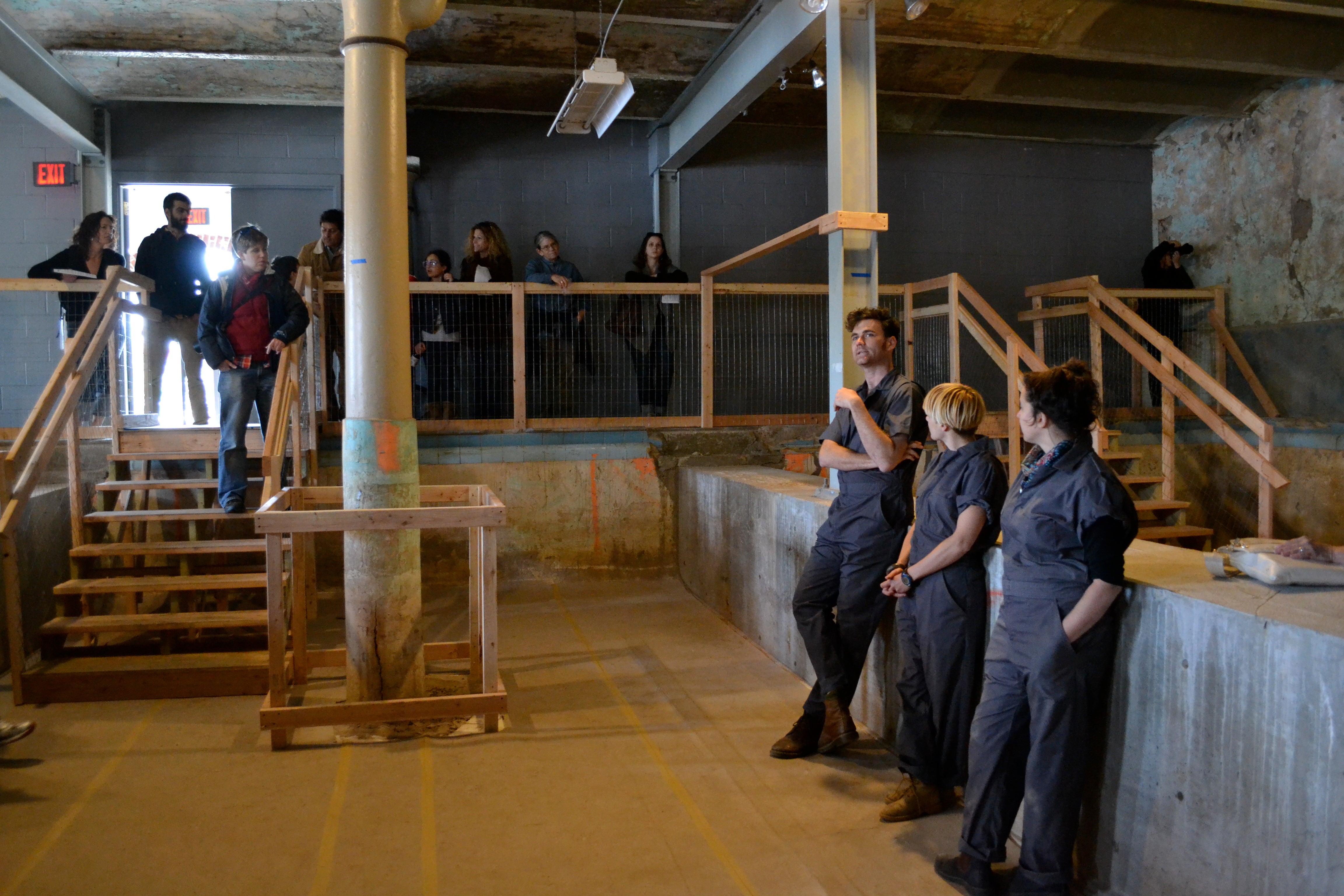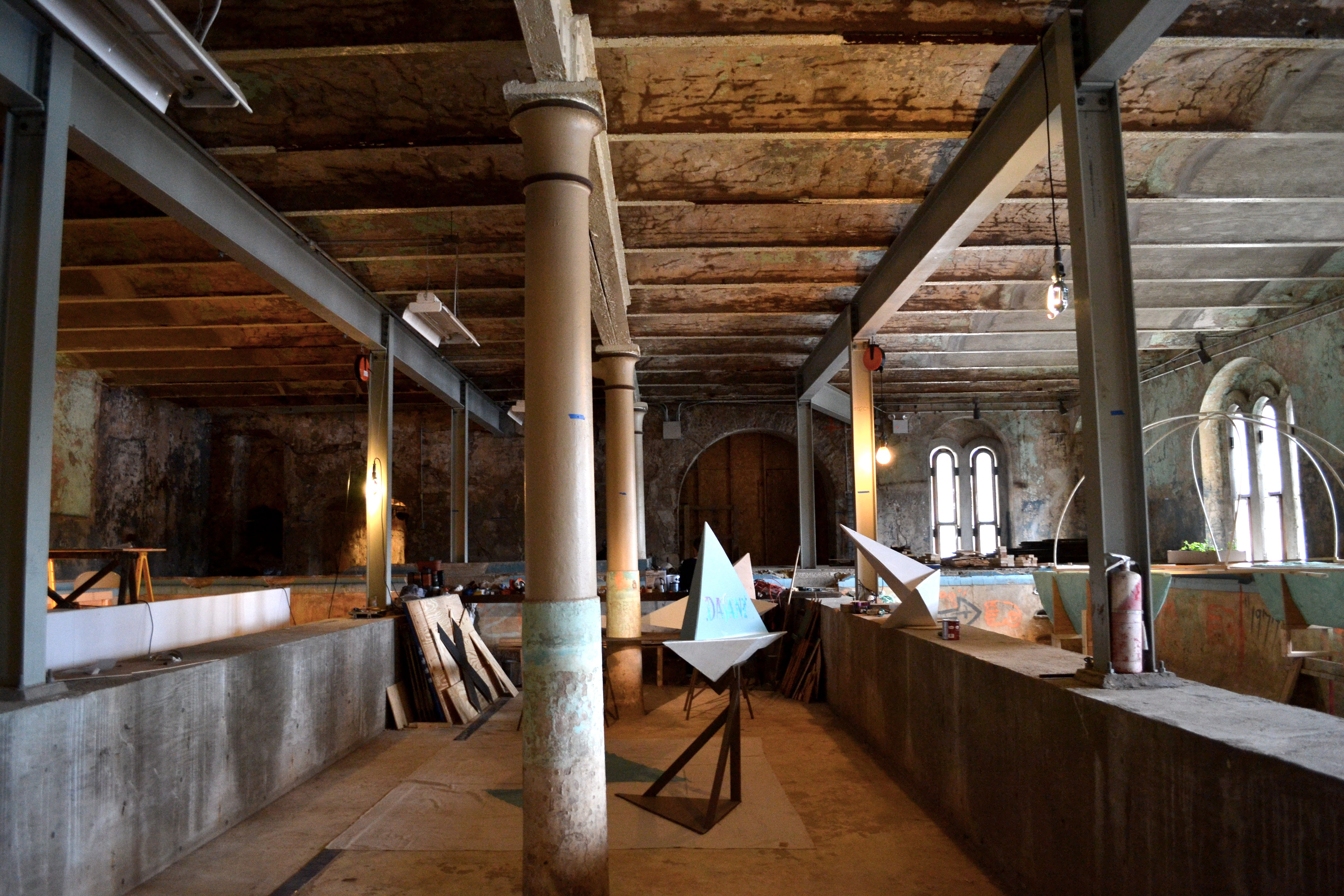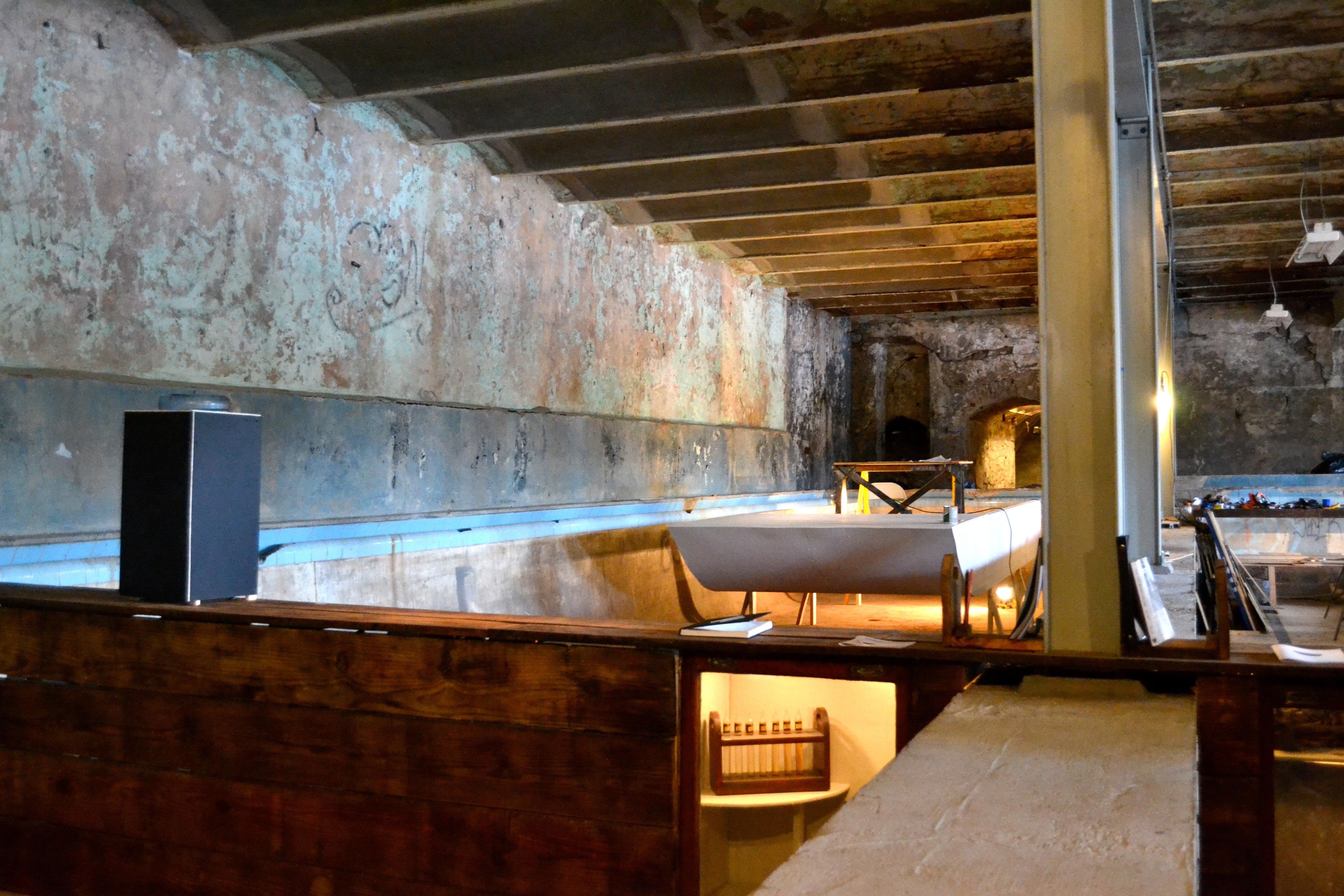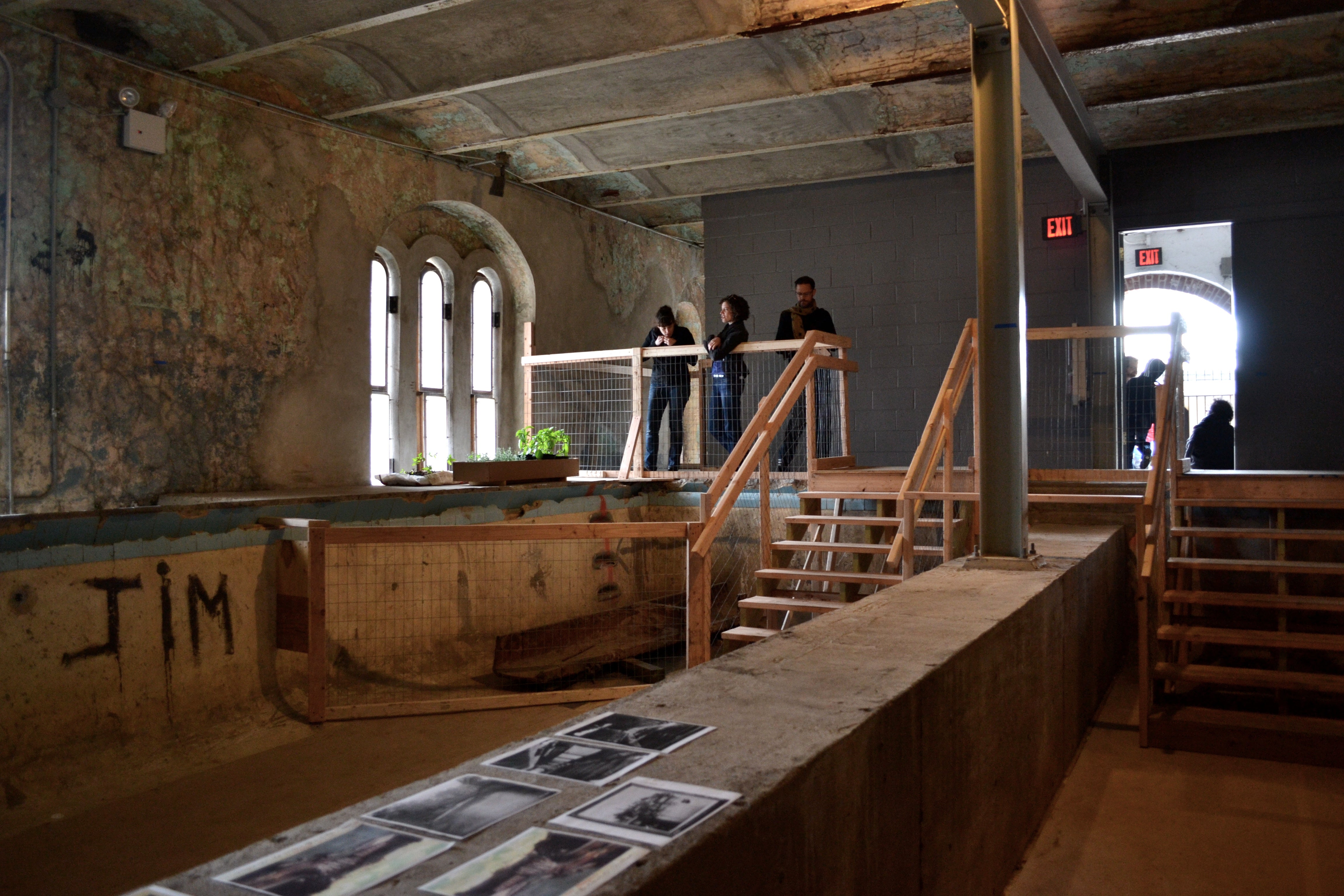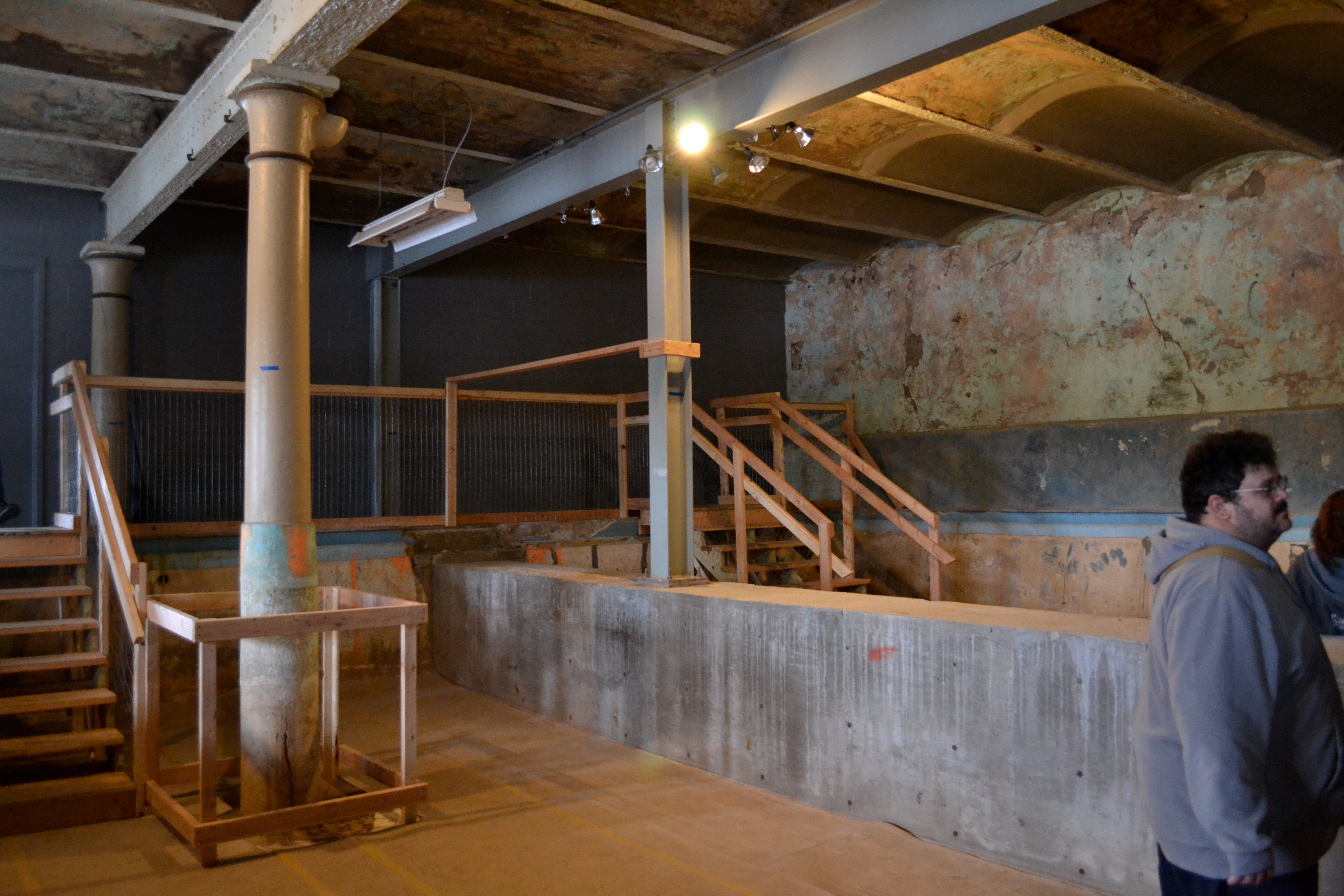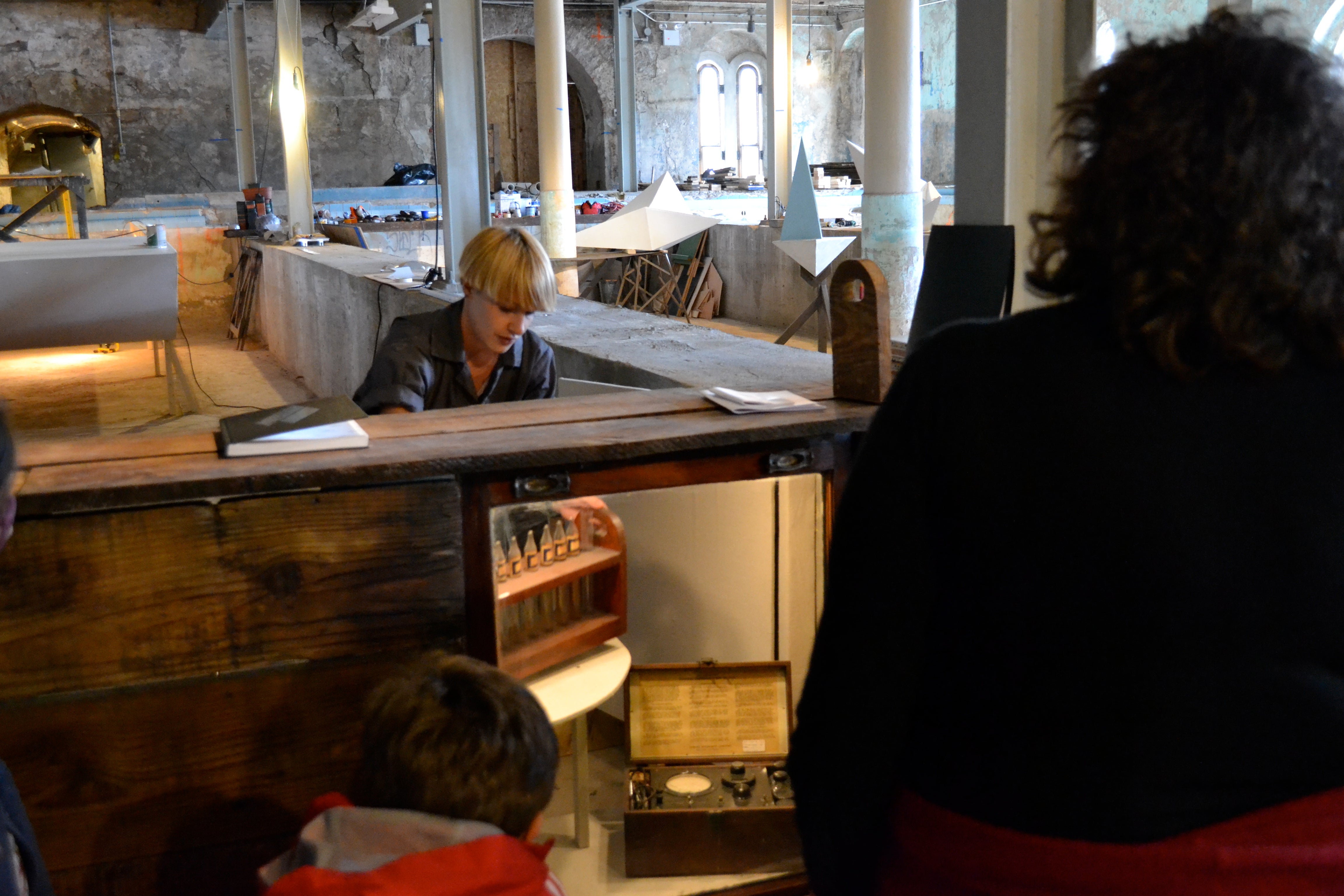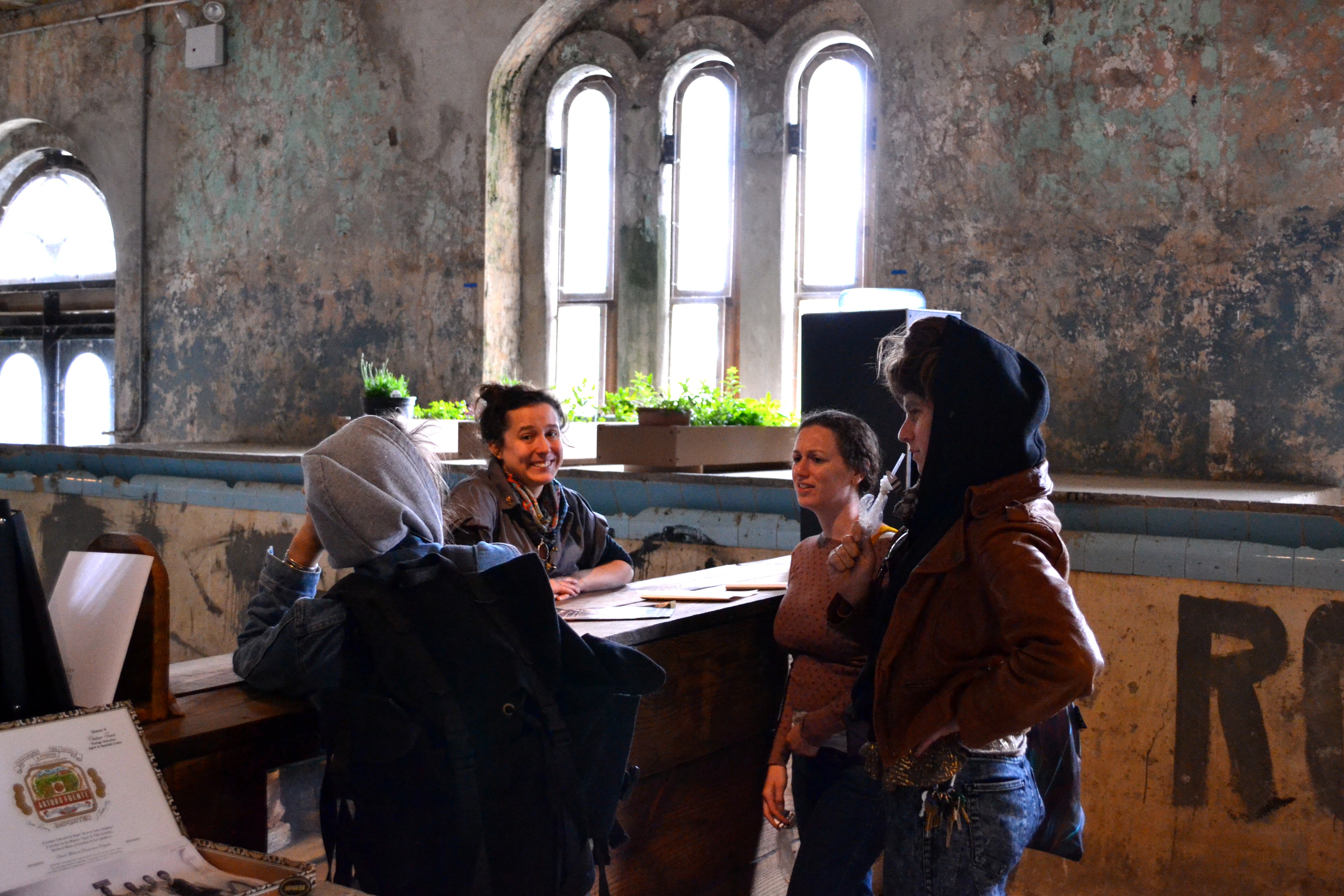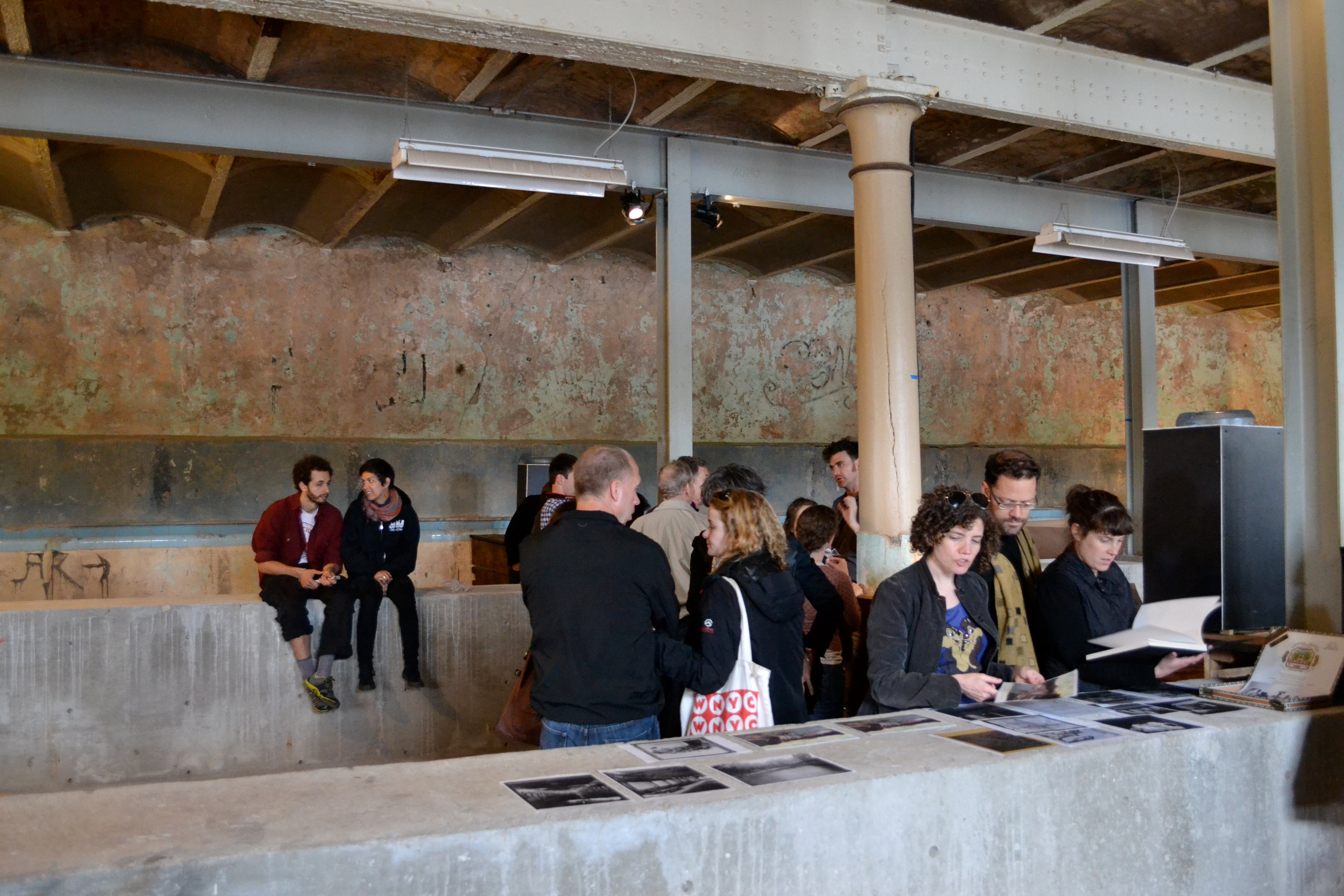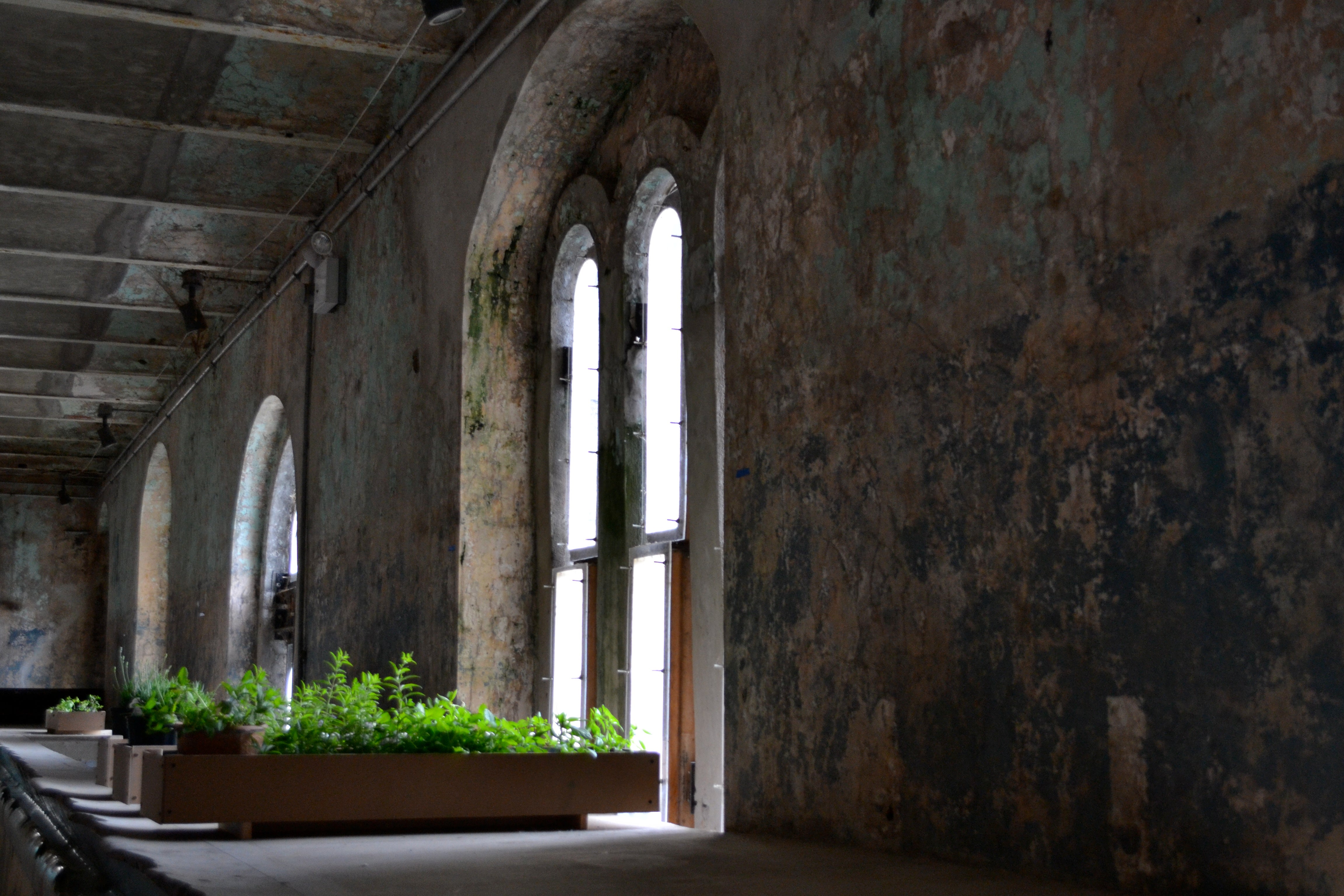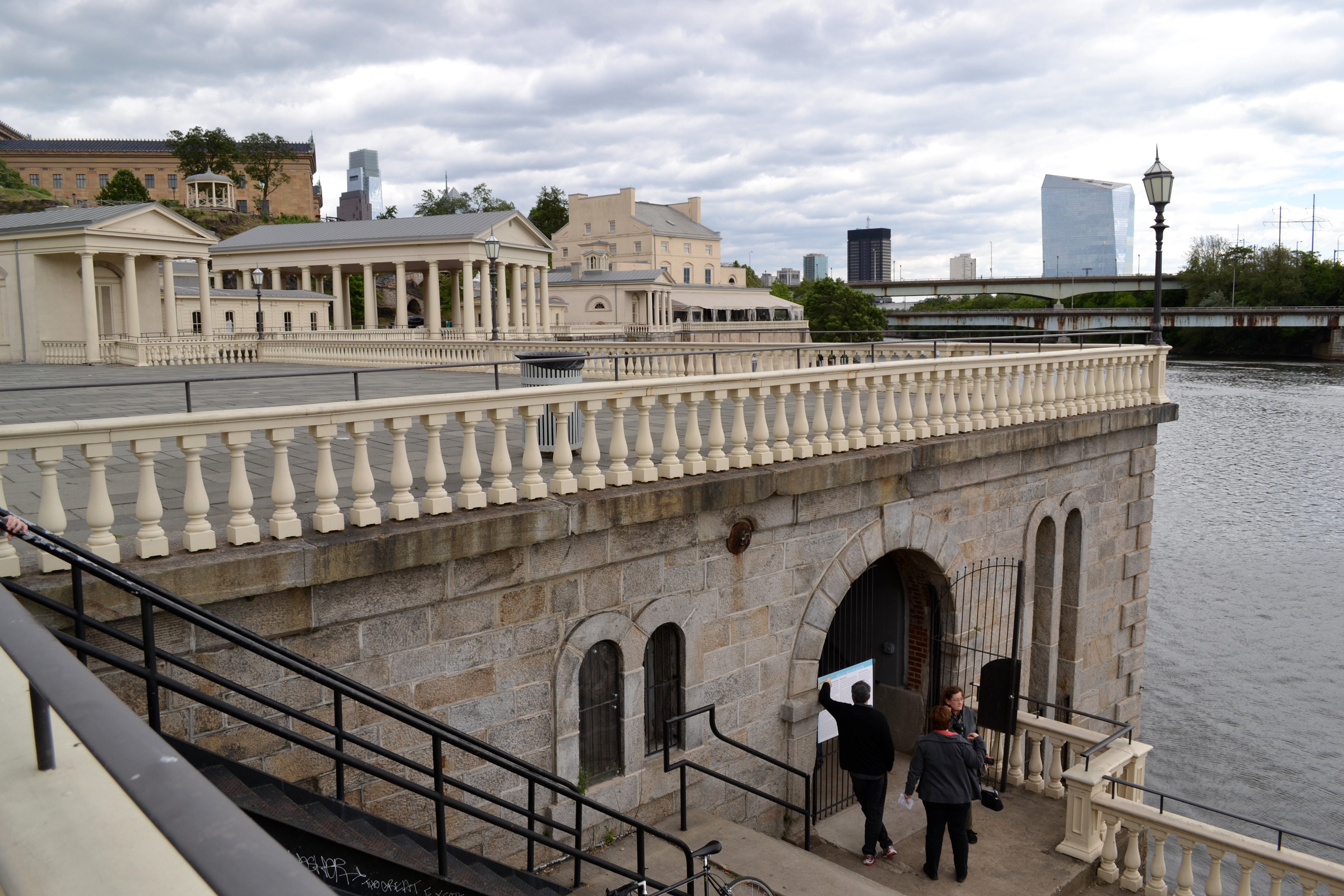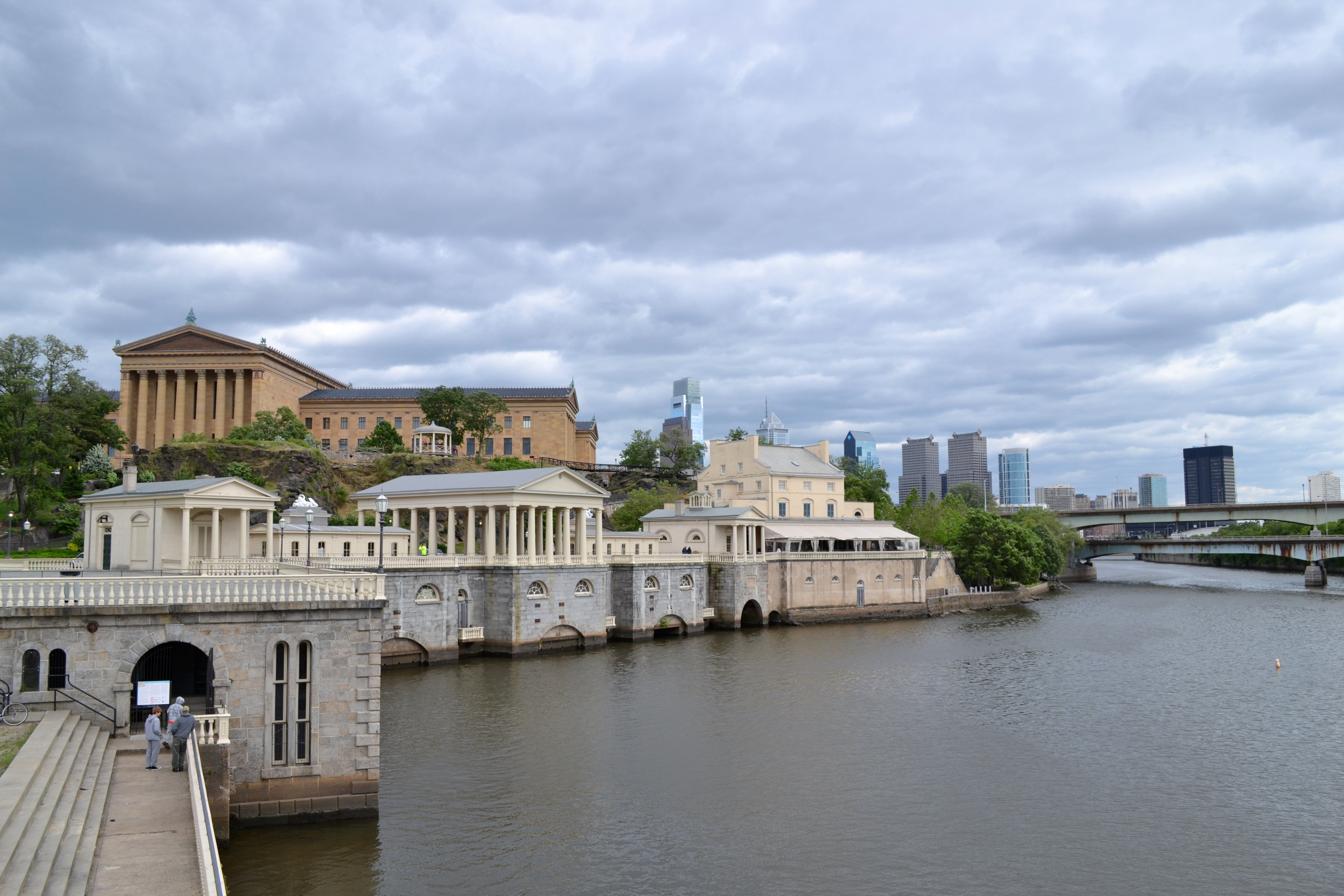Hidden City Festival turns former water plant turned aquarium turned pool into “Bibotorium”
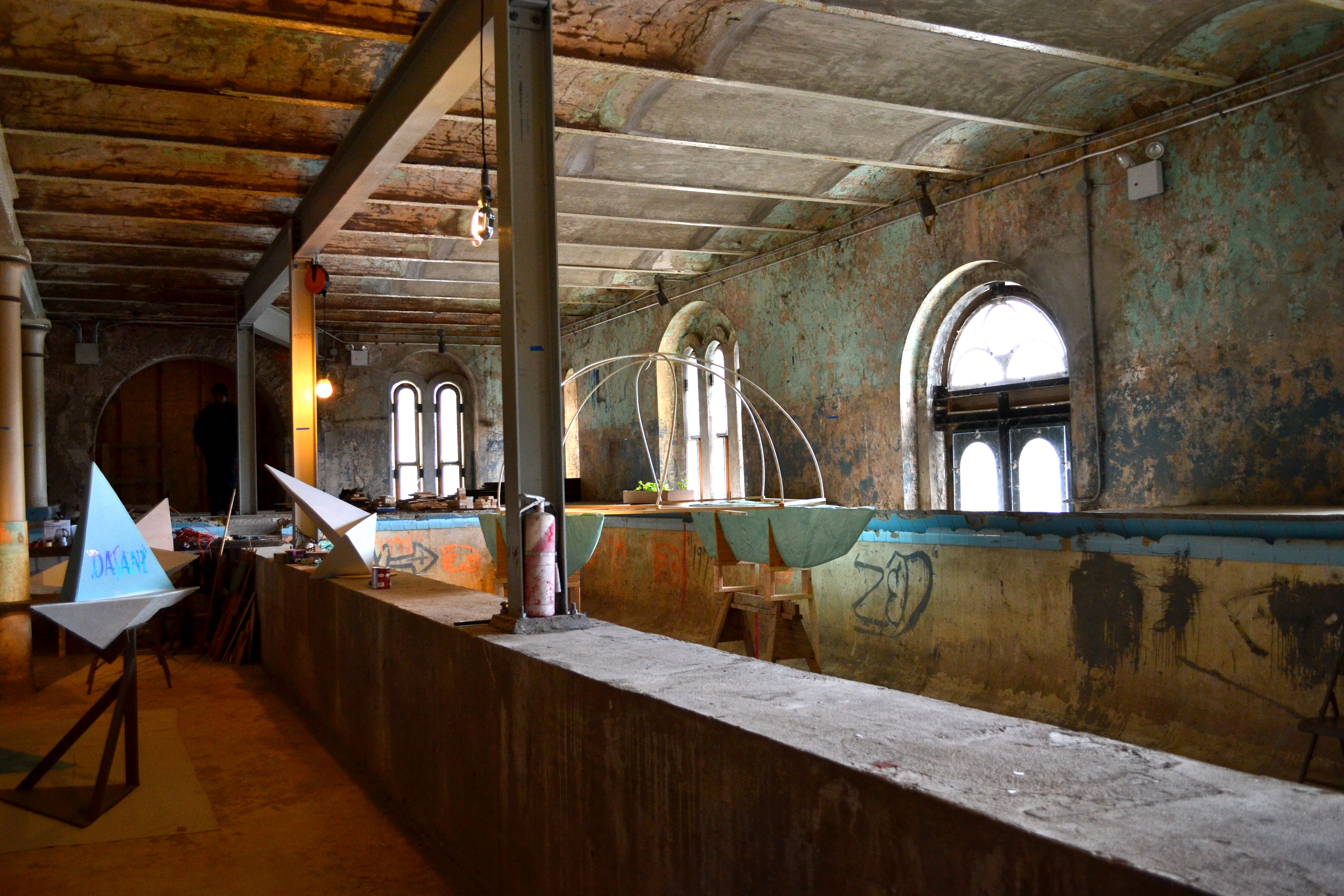
Nearly two hundred years after Philadelphia became the first American city to build a municipal water system, a long abandoned portion of that system is open, once again, to the public. As part of the Hidden City Festival, artist collective Camp Little Hope has given new life to part of Philadelphia’s original Water Works – a building with a unique and varied past as part of a public water plant, a saloon, the country’s fourth-largest aquarium and later a swimming pool.
For the next six weeks, as the Hidden City Festival turns old, underutilized or abandoned buildings into art and community hubs, Camp Little Hope is inviting guests into part of the Fairmount Water Works most recently known as the Kelly Natatorium. There, Camp Little Hope is testing an unrealized 1920s vision for the space and exploring possible water futures.
Hidden City Festival’s Bibotorium
Camp Little Hope has reopened the Kelly Natatorium as the “Bibotorium,” a take on an unrealized 1920s proposal to turn the space into an educational saloon.
Throughout the festival, Camp Little Hope is inviting guests into the building’s drained pools. In each of three pools, the collective is building a boat that will imagine the world given a possible future water scenario – pollution due to fracking, water privatization, and climate change – and filter water accordingly. The collective is also serving tea brewed with herbs growing in Bibotorium’s windows.
The space will be open Thursdays through Sundays and guests are invited to visit throughout the six weeks to make suggestions for each of the boats or check in as progress continues.
Camp Little Hope is also considering hosting related movie screenings and research releases in the space, with an ultimate goal of reviving the space as an open-minded community space.
The many lives of the Kelly Natatorium
All of this is taking place in a long abandoned portion of the Fairmount Water Works, perched on the eastern bank of the Schuylkill River just downstream from the dam and gazebo. The Fairmount Water Works was completed in 1815 and built in response to the Yellow Fever Epidemic of 1793. It was the country’s first municipal water system.
At the northern end of the Water Works compound is the below-grade space that Hidden City Festival and Camp Little Hope have transformed.
At first this space housed the steam engines that pumped water from the river into the filtration system. In 1822 those steam engines were replaced with water wheels, and by 1835 this former steam engine room, with windows facing the river, was turned into a saloon. Visitors could explore the site’s neo-classical architecture, watch the water wheels in action, buy refreshments in the saloon and walk through the nearby gardens and gazebos. In this state, Fairmount Water Works became the second most popular tourist attraction in the country during the mid-19th century.
In 1909, the city closed the Fairmount Water Works because the filtration systems were overwhelmed by the river’s increasing pollution. Shortly afterward, the former steam engine room was converted from a saloon into an aquarium, and by 1929 it was the fourth largest aquarium in the country.
In 1961, the Kelly family turned a portion of this aquarium into a swimming pool, the Kelly Natatorium. The building lived on in this state until 1972 when it was flooded by Hurricane Agnes and closed.
WHYY is your source for fact-based, in-depth journalism and information. As a nonprofit organization, we rely on financial support from readers like you. Please give today.



